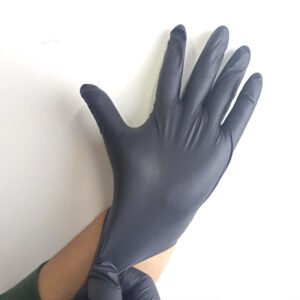What is the Difference Between Latex and Rubber Gloves?
Table of Contents
Introduction
When it comes to protective hand gear, understanding the differences between latex and rubber gloves is crucial for making informed decisions. Whether you’re working in healthcare, industrial settings, or simply handling household tasks, choosing the right type of gloves can significantly impact both safety and performance. This comprehensive guide will explore the fundamental differences between these two popular glove materials, helping you determine which option best suits your specific needs.
Both latex and rubber gloves serve as essential protective barriers, but they possess distinct characteristics that make them suitable for different applications. From material composition to durability, cost, and potential allergic reactions, each type offers unique advantages and limitations that users should carefully consider.
Understanding the Materials
What is Latex?
Latex is a natural material derived from the rubber tree (Hevea brasiliensis). The milky white sap extracted from these trees undergoes processing to create the flexible, elastic material commonly used in glove manufacturing. Natural latex gloves are renowned for their excellent tactile sensitivity, making them particularly popular in medical and laboratory settings where precision is paramount.
The manufacturing process of latex gloves involves dipping hand-shaped molds into liquid latex, followed by vulcanization to create the final product. Leading manufacturers like Jubaomachine have developed sophisticated production techniques that ensure consistent quality and performance in latex glove manufacturing.

What is Rubber?
Rubber gloves typically refer to synthetic rubber products made from materials such as nitrile, neoprene, or other synthetic polymers. Unlike natural latex, synthetic rubber is manufactured through chemical processes that combine various monomers to create polymer chains with specific properties. This synthetic approach allows manufacturers to engineer gloves with targeted characteristics such as enhanced chemical resistance or reduced allergenicity.

Synthetic rubber gloves have gained significant popularity due to their versatility and the ability to customize properties based on intended applications. Modern production facilities, including those operated by companies like Jubaomachine, utilize advanced polymer chemistry to create high-performance synthetic rubber gloves.
Key Differences Between Latex and Rubber Gloves
Material Composition
The most fundamental difference lies in the source material. Latex gloves are made from natural rubber latex, which contains proteins that can trigger allergic reactions in sensitive individuals. These proteins are naturally occurring components of the rubber tree sap and cannot be completely eliminated during processing.
In contrast, synthetic rubber gloves are manufactured from artificially created polymers that do not contain the allergenic proteins found in natural latex. This synthetic composition makes them a safer alternative for individuals with latex allergies while maintaining many of the protective qualities required for various applications.
Durability and Strength
When comparing durability, both materials offer distinct advantages. Natural latex gloves provide excellent elasticity and tear resistance, making them suitable for tasks requiring flexibility and dexterity. However, they may degrade when exposed to certain chemicals, oils, and ozone.
Synthetic rubber gloves, particularly those made from nitrile, often demonstrate superior puncture resistance and chemical compatibility. They maintain their integrity when exposed to a broader range of substances, making them ideal for industrial applications and chemical handling. Quality manufacturers ensure that both types meet rigorous standards for strength and durability.
| Property | Latex Gloves | Synthetic Rubber Gloves |
|---|---|---|
| Puncture Resistance | Good | Excellent |
| Chemical Resistance | Limited | Superior |
| Elasticity | Excellent | Good to Very Good |
| Tactile Sensitivity | Excellent | Good |
Allergic Reactions
Allergic reactions represent one of the most significant differences between these glove types. Natural latex contains proteins that can cause allergic reactions ranging from mild skin irritation to severe anaphylactic responses. Healthcare workers and others frequently exposed to latex products may develop latex sensitivity over time.
Important Note: Individuals with known latex allergies should always opt for synthetic rubber alternatives to avoid potentially serious health complications.
Synthetic rubber gloves eliminate this concern by using materials that do not contain allergenic proteins. This makes them the preferred choice for healthcare facilities, food service establishments, and other environments where latex sensitivity might be a concern among staff or clients.
Cost Considerations
From an economic perspective, latex gloves traditionally offer a cost advantage over many synthetic alternatives. The established supply chain for natural latex and mature manufacturing processes contribute to their competitive pricing. However, market fluctuations in natural rubber prices can affect latex glove costs.
Synthetic rubber gloves, while sometimes more expensive initially, may provide better long-term value in certain applications due to their enhanced durability and chemical resistance. The total cost of ownership should include factors such as replacement frequency, potential allergic reaction management, and specific performance requirements.
Applications and Uses
Medical and Healthcare
In medical and healthcare settings, both glove types serve critical roles, though synthetic rubber gloves have gained preference in many facilities. Latex gloves remain popular for surgical procedures due to their excellent tactile sensitivity and barrier properties. However, many hospitals have transitioned to latex-free environments to protect patients and staff from allergic reactions.
Synthetic rubber gloves, particularly nitrile options, provide reliable protection for medical examinations, patient care, and laboratory work. Their resistance to various chemicals and biological fluids makes them suitable for diverse healthcare applications without the allergy concerns associated with latex.
Industrial Applications
Industrial environments often favor synthetic rubber gloves due to their superior chemical resistance and durability. Manufacturing facilities, automotive workshops, and chemical processing plants require gloves that can withstand exposure to oils, solvents, and other harsh substances.
Companies like Jubaomachine specialize in producing industrial-grade gloves that meet stringent safety standards. These gloves must provide reliable protection while maintaining the flexibility needed for complex manual tasks in challenging industrial environments.
Household and Cleaning
For household cleaning and maintenance tasks, both glove types offer adequate protection, though the choice often depends on personal preferences and any latex sensitivities. Synthetic rubber gloves typically provide better resistance to cleaning chemicals and detergents, making them ideal for heavy-duty cleaning tasks.
The durability of synthetic options also makes them more economical for regular household use, as they tend to last longer than latex alternatives when exposed to common cleaning products and repeated washing.
Choosing the Right Gloves for Your Needs
Selecting between latex and synthetic rubber gloves requires careful consideration of several factors. First, assess any known allergies or sensitivities among users. If latex allergies are a concern, synthetic alternatives are the only safe option.
Consider the specific tasks and environmental conditions where the gloves will be used. For applications requiring maximum tactile sensitivity, such as precision assembly or medical procedures, high-quality latex gloves may be preferred. However, for chemical handling, industrial work, or environments where durability is paramount, synthetic rubber gloves typically offer superior performance.
Budget considerations should also include the total cost of ownership, factoring in replacement frequency, potential health risks, and performance requirements. While synthetic gloves may have higher upfront costs, their durability and universal compatibility often provide better long-term value.
Quality manufacturers like Jubaomachine offer both latex and synthetic rubber options, allowing users to select products that best match their specific requirements while maintaining high standards for safety and performance.
Conclusion
The choice between latex and rubber gloves ultimately depends on specific application requirements, user health considerations, and performance expectations.
